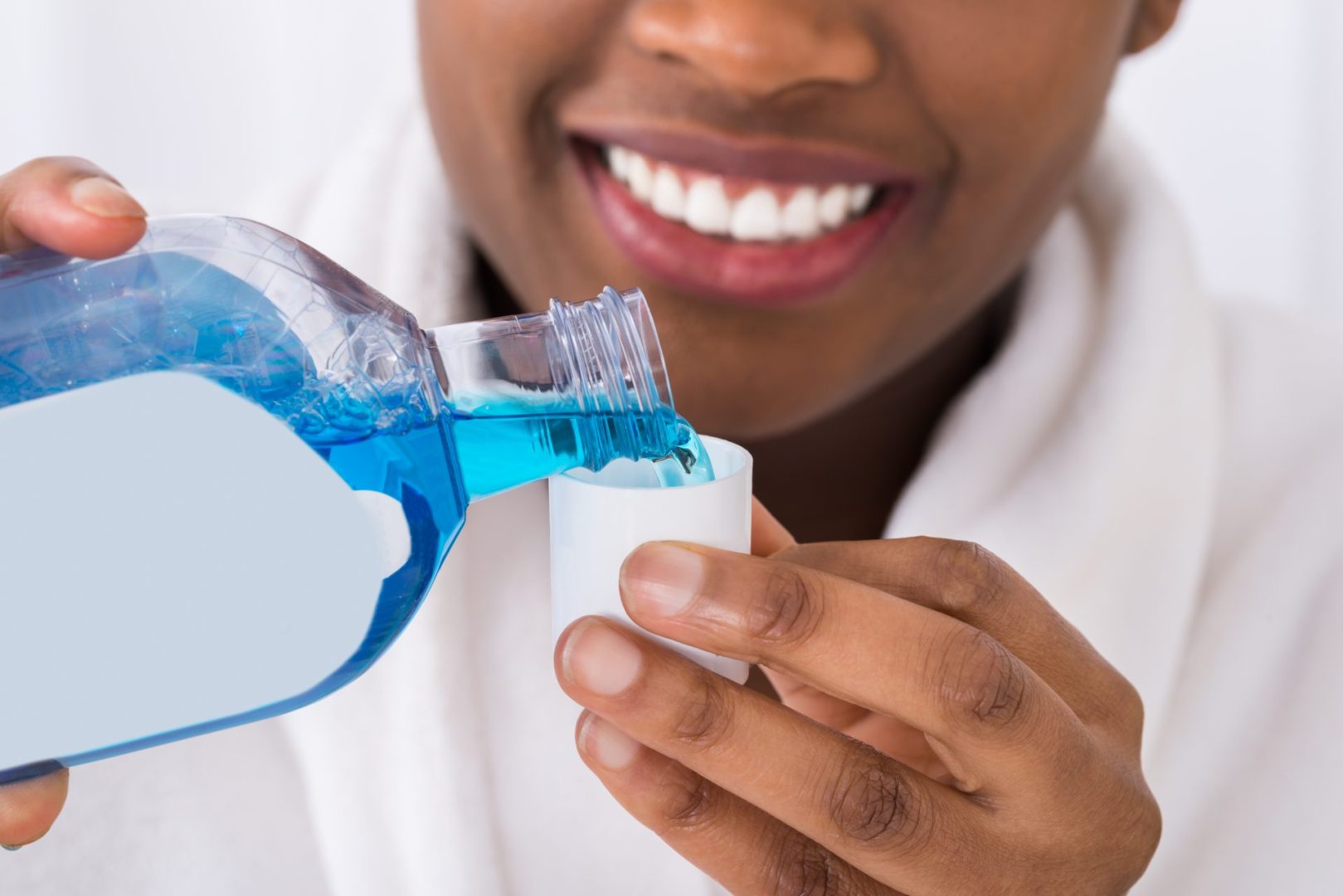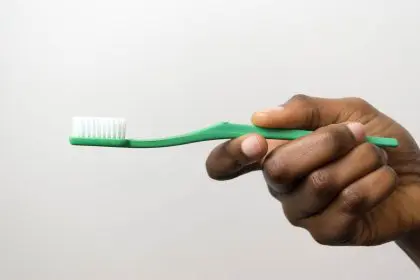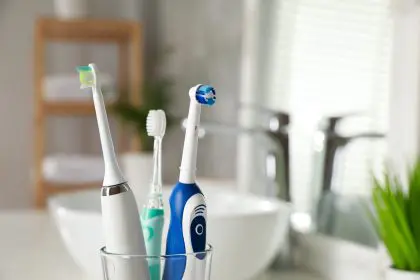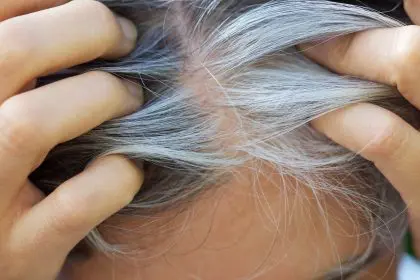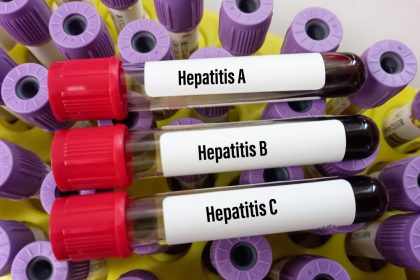A fresh feeling mouth is just a swish away with mouthwash—but what happens when this common bathroom staple ends up in your stomach instead of down the drain? While most adults won’t experience problems from accidentally swallowing tiny amounts, larger quantities could lead to hazardous health complications that many people never consider.
The common bathroom product that poses hidden dangers
Mouthwash stands as a cornerstone in many people’s daily oral hygiene routines. The minty liquid promises fresher breath, reduced plaque, and protection against tooth decay when used correctly. The standard recommendation involves swishing a small amount around your mouth for 30 to 60 seconds before spitting it out—not swallowing it.
Most adults who accidentally gulp down a tiny amount won’t experience serious issues. However, the reality is that mouthwash contains several components that can become toxic when consumed in significant quantities, turning this everyday product into a potential health threat.
7 potentially harmful ingredients lurking in your mouthwash
What makes mouthwash effective for oral health can also make it dangerous when ingested. Most commercial mouthwashes contain a combination of these seven potentially problematic ingredients:
Ethanol (ethyl alcohol) – Many mouthwashes contain between 5% and 27% alcohol, which can cause intoxication effects similar to alcoholic beverages when consumed in larger amounts.
Chlorhexidine gluconate – While excellent at killing bacteria in your mouth, this ingredient can irritate the digestive tract when swallowed.
Cetylpyridinium chloride – Another antibacterial agent that can cause stomach upset if ingested in quantity.
Fluoride – Although beneficial for strengthening tooth enamel, excessive fluoride consumption can disrupt your body’s acid-base balance and cause gastrointestinal distress.
Hydrogen peroxide – Found in whitening mouthwashes, this chemical can irritate the digestive system lining.
Methyl salicylate – This compound gives some mouthwashes their distinctive flavor but can cause severe digestive symptoms when consumed excessively.
Essential oils – Ingredients like menthol or eucalyptol provide that tingling sensation but aren’t meant for internal use.
The alcohol content presents a particular concern, especially for children or those with alcohol sensitivities. The concentration in some mouthwashes is substantial enough that consuming even a moderate amount could lead to symptoms resembling alcohol intoxication.
Warning signs your body has been affected
The symptoms that develop after swallowing mouthwash depend largely on the quantity consumed and the specific formulation. Understanding the difference between moderate and severe ingestion symptoms helps determine the appropriate response.
For moderate ingestion, watch for upset stomach, nausea, vomiting, drowsiness, slowed breathing, and potential intoxication effects from the alcohol content.
More severe cases might produce diarrhea, dizziness, headaches, low blood pressure, rapid heart rate, slurred speech, throat pain, and in extreme situations, unconsciousness or even coma.
Children face heightened vulnerability to these effects due to their smaller body size and still-developing systems. The alcohol content in mouthwash can lead to dangerous conditions in children including hypoglycemia (low blood sugar), seizures, and in the most severe cases, life-threatening complications.
The special risk for children and households with young family members
Children represent a particularly vulnerable population when it comes to mouthwash ingestion. Their smaller bodies process chemicals differently than adults, making them more susceptible to toxicity at lower doses.
A child who consumes even a relatively small amount of alcohol-containing mouthwash may develop serious complications. The sweet flavors and bright colors of many mouthwash products can attract young children who might mistake them for beverages or candy.
Parents and caregivers should store mouthwash securely, treating it with the same caution as medications or cleaning products. Placing mouthwash in high cabinets with childproof locks provides an important safety barrier between curious children and potentially harmful products.
For households with young children, considering alcohol-free mouthwash alternatives offers an additional layer of protection while still maintaining good oral hygiene practices.
Immediate steps to take after accidental ingestion
If you or someone in your care swallows mouthwash, taking prompt and appropriate action can help minimize potential harm.
First, rinse the mouth thoroughly with water to dilute any remaining chemicals. Ensure the person isn’t coughing or choking, which could indicate aspiration rather than ingestion.
Contrary to outdated advice, do not attempt to induce vomiting unless specifically instructed by a healthcare provider. Modern poison control protocols typically advise against this practice as it can sometimes cause additional harm.
For significant ingestion—more than a small accidental amount—contact the National Poison Control Center immediately at 1-800-222-1222. These specialists can provide guidance based on the specific mouthwash ingredients and amount consumed.
When communicating with poison control or emergency services, be prepared to provide important details including the person’s age, weight, and specific mouthwash ingredients (having the bottle on hand helps).
When to seek emergency medical attention
While many cases of minor mouthwash ingestion can be managed with guidance from poison control, certain situations warrant immediate emergency medical attention.
Seek emergency care if the person shows signs of significant intoxication, difficulty breathing, extreme drowsiness, loss of consciousness, or severe digestive distress. These symptoms could indicate a more serious reaction requiring professional intervention.
For children especially, err on the side of caution. Their smaller bodies can be affected more dramatically by substances that might cause only mild symptoms in adults.
Remember that the alcohol content in mouthwash can lead to symptoms similar to alcohol poisoning, which requires prompt medical treatment to prevent complications.
How to monitor at home after minor exposure
For cases of very minimal ingestion where poison control has advised home monitoring, maintain vigilant observation for any developing symptoms.
Keep the affected person calm and alert. Avoid activities that could pose additional risks until you’re confident no adverse effects will develop. This waiting period typically spans several hours after ingestion.
Check the mouthwash label for alcohol content and try to estimate how much was swallowed to provide this information if symptoms develop later.
While there aren’t specific home treatments for mouthwash ingestion beyond the initial dilution with water, staying hydrated can help the body process and eliminate the chemicals more efficiently.
Safer alternatives for daily oral hygiene
For those concerned about the potential risks associated with traditional mouthwashes, several safer alternatives exist that can still provide oral health benefits.
Alcohol-free mouthwashes offer similar antibacterial properties without the risks associated with ethanol content. These formulations are particularly appropriate for households with children or individuals in recovery from alcohol dependence.
Salt water rinses (made by dissolving half a teaspoon of salt in warm water) provide a natural antibacterial option that poses minimal risk if accidentally swallowed.
Diluted hydrogen peroxide solutions (typically a 3% solution diluted equally with water) can help with gum health, though they should still be spit out rather than swallowed.
Prevention strategies for households
The most effective approach to mouthwash safety combines proper storage, usage guidelines, and product selection.
Store all mouthwash products securely, preferably in locked cabinets or areas inaccessible to children and vulnerable adults. Treat mouthwash as you would any other potentially harmful substance in your home.
Consider transferring mouthwash to containers with safety caps if the original packaging lacks child-resistant features. However, always maintain proper labeling so the contents remain identifiable.
For families with young children, alcohol-free formulations eliminate one of the most hazardous components while still maintaining effectiveness for oral hygiene.
Establish clear household rules about proper mouthwash use, emphasizing that it should never be swallowed and always used under appropriate supervision for children.
While mouthwash remains an effective tool in maintaining oral health when used correctly, understanding its potential dangers ensures everyone in your household can benefit from its use without unnecessary risk. By recognizing the warning signs of ingestion and knowing how to respond appropriately, you can protect yourself and your loved ones while still enjoying the benefits of a comprehensive oral hygiene routine.

